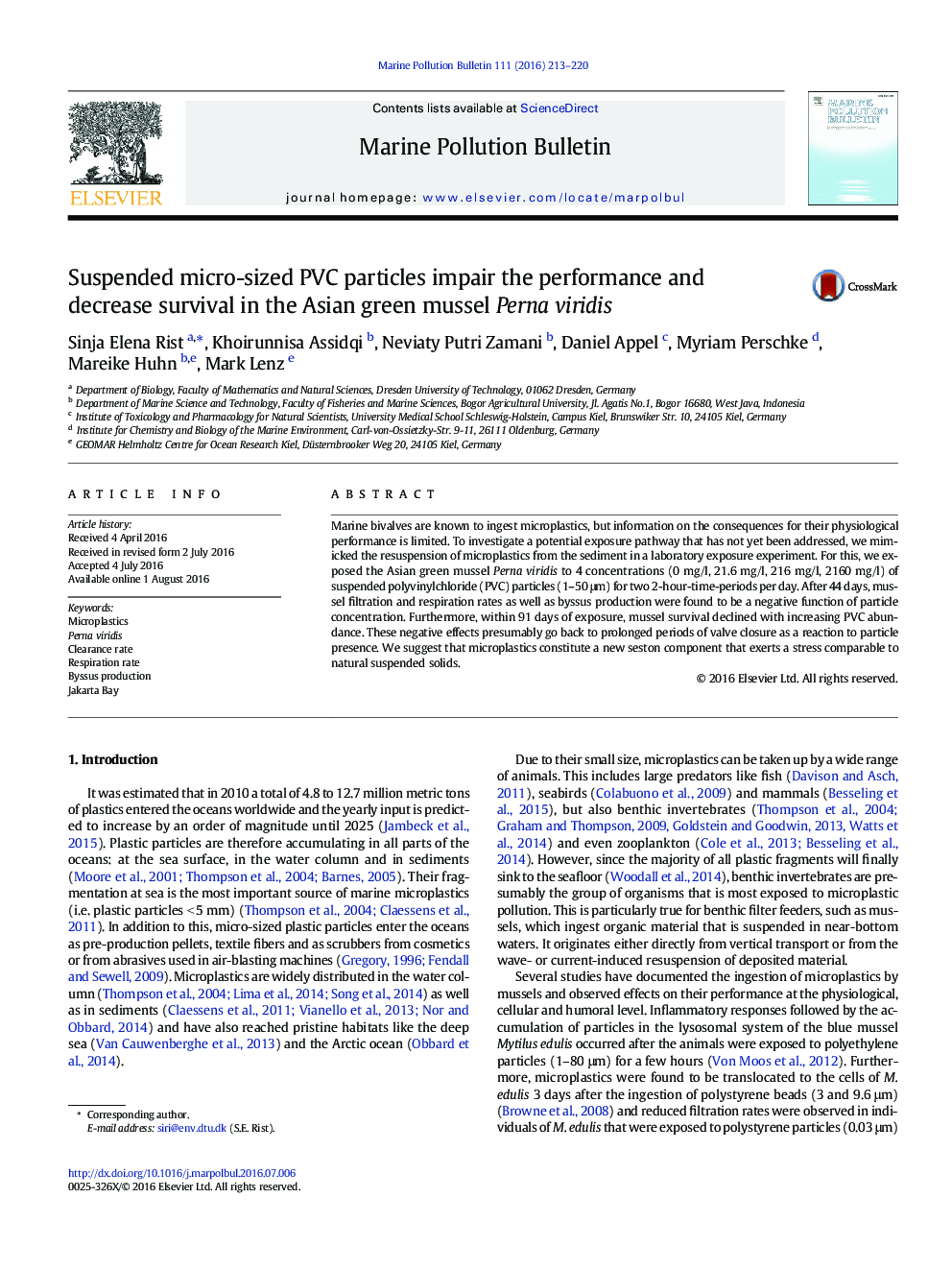| Article ID | Journal | Published Year | Pages | File Type |
|---|---|---|---|---|
| 4476307 | Marine Pollution Bulletin | 2016 | 8 Pages |
•Asian green mussels were exposed to different concentrations of PVC particles.•Exposure to different microplastics concentrations was maintained for 3 months.•Microplastics exposure impaired the mussels' physiological performance.•Microplastics exposure increased mussel mortality.•The size of the induced effect was dosis dependent.
Marine bivalves are known to ingest microplastics, but information on the consequences for their physiological performance is limited. To investigate a potential exposure pathway that has not yet been addressed, we mimicked the resuspension of microplastics from the sediment in a laboratory exposure experiment. For this, we exposed the Asian green mussel Perna viridis to 4 concentrations (0 mg/l, 21.6 mg/l, 216 mg/l, 2160 mg/l) of suspended polyvinylchloride (PVC) particles (1–50 μm) for two 2-hour-time-periods per day. After 44 days, mussel filtration and respiration rates as well as byssus production were found to be a negative function of particle concentration. Furthermore, within 91 days of exposure, mussel survival declined with increasing PVC abundance. These negative effects presumably go back to prolonged periods of valve closure as a reaction to particle presence. We suggest that microplastics constitute a new seston component that exerts a stress comparable to natural suspended solids.
